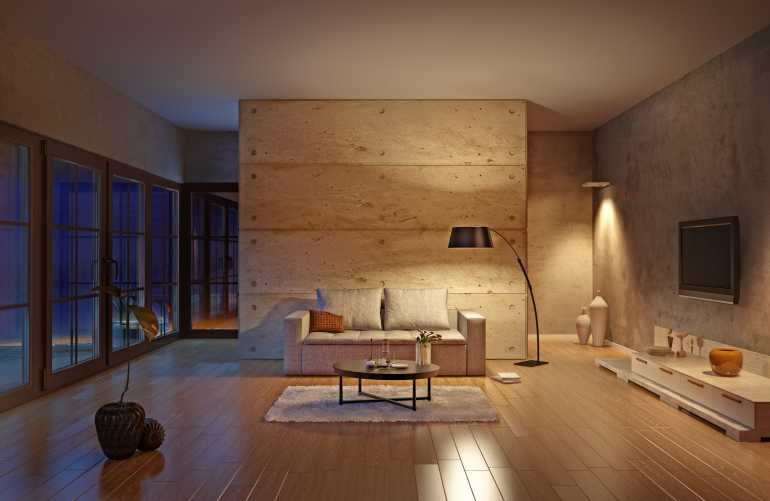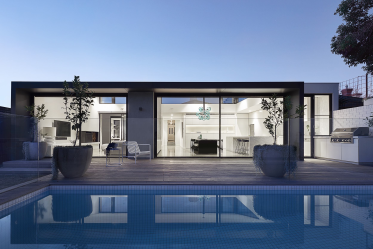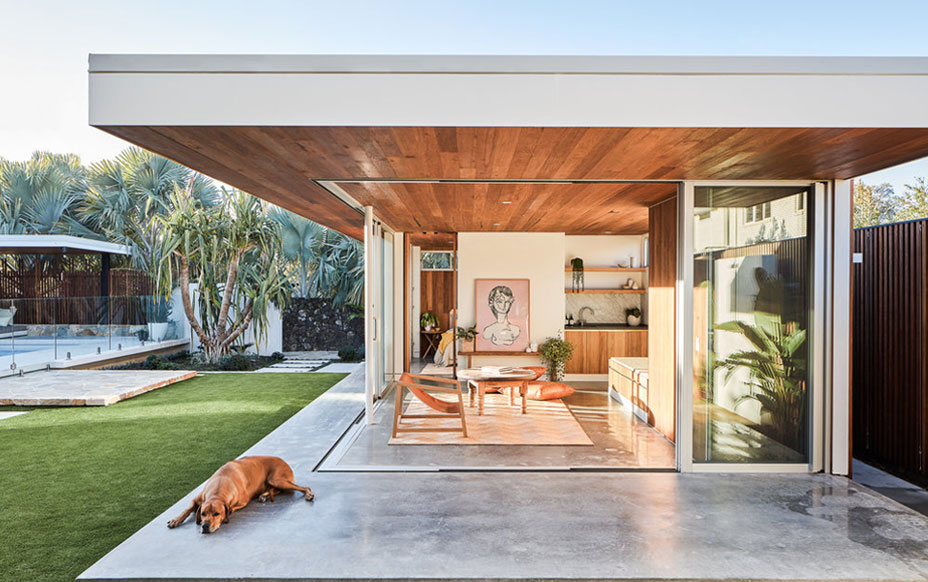
Refreshing to see lighting solutions that don't feature racks of downlights, maintaining the integrity of the design
Adele Locke, founder of Mint Lighting Design, is changing the way people consider illumination for their next residential projects. Working directly with the homeowners, builders or architects and interior designers, she is transforming the way light is treated in our homes. We caught up with her recently to find out more about her game changing work.
Q. You worked closely with your father in his bespoke and architectural lighting manufacturing business, working on large scale commercial projects. What are the key learnings you now apply in your current business?
My father taught me many things about business – about valuing knowledge and time, and sharing knowledge with anyone who wants to learn. He also taught me and incredible amount about luminaire design and how to go about manufacturing specialist designs in Melbourne. It’s a pretty unique background to have, even for the lighting industry, and I’m very fortunate he was such a talented teacher, designer and fabricator. His business initially revolved around ELSCO tennis court lights, but over time he branched out and worked with the key lighting designers and architects around Australia, taking their visions to reality for hundreds of projects – from Crown Casino to Nauru House to homes and retail stores.
I love being given the opportunity to share sharing my knowledge and experience of light luminaire fabrication, design and business management. There is no such thing as sharing too much knowledge. The more we all know, the stronger our entire industry becomes and the better results all of our clients win with better results.
It breaks my heart when I see bad lighting installed, regardless if it’s business or a home. The person behind that project has worked hard to earn the money to pay for it, and they deserve to get the best results possible for their investment.

Illuminating a home in the right way is critical to how one will appreciate the space long term.
Q. For many new homeowners, lighting consultants is something that people probably only think of after they have moved in and realise where the issues are. Do you do many remediation projects or is the design industry starting to urge clients to engage you earlier in the process? How has the shift in thinking around lighting changed over the past five years?
We do a lot of remediation projects, although with homes it’s usually after people have been living with horrible lighting for five to ten years and finally just say ENOUGH!
With commercial projects, we’re being brought in early to review designs and find ways to improve the results, while reducing the costs. You would think you could only get one of those - cheaper or better - but actually we find that we can get both consistently.
Happily we are seeing clients look to lighting much earlier in the process now than they did five years ago. I think it comes down to the increased exposure to images of amazing, creatively designed lighting. When they’re discussing their new build or renovation, they think, 'How do we get better lighting in our new home?' Often that question is, 'I don’t want downlights, but what else is there?' and then they find us and we guide them through.
Aside from providing amazing designs to our clients, we also take the time to educate them, while we’re designing. That way our clients are in a position to make informed decisions once they’ve worked with us – not just take our advice as gospel. We all know there’s no one right answer for lighting – just lots of fantastic options to explore depending on the constraints of the project. Educated clients can interrogate their interior design and building design with reference to the lighting design, and then we get to develop some striking solutions. When we collaborate with our clients and their builders and design teams, and together we get amazing end results.
Q. Lighting can play such an important role in the health of the inhabitants of a space, what do you think are the key benefits of getting lighting right?
I think the key benefit is mood. Bad lighting literally makes you grumpy and grouchy. It’s also tiring to live with glary lighting all through your ceiling. The wrong colour of light affects behaviour as well. Better mood equals happier and healthier people.
By designing light that ebbs and flows and creates zones of brightness and quiet zones, we find more of the home is lived in, people gravitate to different areas to be depending on what they want to be doing. So that’s a benefit too – making use of all of your home, and finding different areas to do different activities keeps your creative brain active.
There are a of really exciting scientific reports coming through from research done over the last few years around the effects of lighting, so we’re now in a position to know the impacts, rather than intuit them. What’s interesting is that a lot of these reports confirm what we’ve intuited over the last hundred years about light.

Creating a healthy living space can be enhanced significantly by the lighting. Image Courtesy of Building Designer - TC&P Todd Pearce
Q. Many people would think of lighting design/designers as only applicable to high-end homes. What would you say to that?
Once upon a time that was the case. Happily for all of us, it no longer is. It doesn’t matter if you’re in a small apartment in Docklands, a suburban home in Pakenham or a grand home on the beach – you deserve amazing light, If you can’t get better than “down-lights and pendants” from whoever you’re talking to about the lighting in your home - it's time to start researching a little wider and finding the right specialist to transform your home. When it comes to thinking about your budget for lighting, consider this - amazing surfaces – benches, paint, flooring etc (which is where most of you build budget goes after structure) – under poor light will look bad. There’s nothing you can do about that. However, regardless of the quality of the finished surfaces, you can create an absolutely amazing environment with the right light – and it’ll cost less than your kitchen bench.

This walk-in robe has linear LED lighting built in the supporting rails for the hanging clothes, with additional lighting recessed above the joinery. This allows the owners to select how much light they need on any given morning, getting ready for the day.
Q. Do you work with many custom lighting solutions or are you just finding the right lights from existing suppliers? What are your clients asking for?
Mostly we source existing solutions from suppliers, many of whom are Melbourne-based lighting designers with a hugely diverse range of standard pieces. With our many years of experience, we have a huge mental catalogue of luminaires, which 99% of our clients would never have seen, considered or even been exposed to. That means that what we see as the “standard” stuff is actually totally unique for most people. When you consider the sheer volume of new designs launching every year, it’s not that hard to go “off the shelf” and still be completely unique.That said, we are seeing an increase of clients looking for that “something special” in their home. Or who have a really tricky area that needs a specialised solution to make it work. In collaboration with others and also in-house, we’ve been fortunate to design and build some beautiful unique and tailored lights for homes over the years, and we’re looking forward to doing even more in the future.
Q. Finally, are many people coming directly to you, or is it through their architect or designer? And if you work with the architect or designer, do you still work closely with the residents and do you think that’s important to have a connection to the end user?
Eighty percent of our clients are the homeowners. Ultimately, I think that is because they are the ones that truly care what it will feel like to live in the home and they’re more and more aware that the feel is created by the light. In part I attribute this to the amazing lighting designs being done in hospitality venues around Melbourne and the world. Sit in a beautifully designed restaurant for an evening and enjoy a meal, then go home and turn on the banks of down-lights and you’ll quickly put two and two together and figure out that lighting matters.
When we’re engaged by interior designers and architects, it’s also critical that the homeowner is involved. The biggest advantage of working with a design team and not just the homeowner is that we can really take our ideas out of the box and work together to craft something magical. Also, with my experience in design and manufacturing, I can take bespoke lighting concepts from sketch to fabrication far quickly and easily.
Ultimately, for all of us that work in the residential field, I believe the most important thing we can remember is – it’s THEIR home. We are there to bring inspiration, ideas, solutions, creativity and function, but if we don’t bring our clients along for the journey, they will never be satisfied with the end result, and they are the ones who have to live with it.
Contact Mint Lighting to help transform you next project or current home.
WRITTEN BY HouseLab







